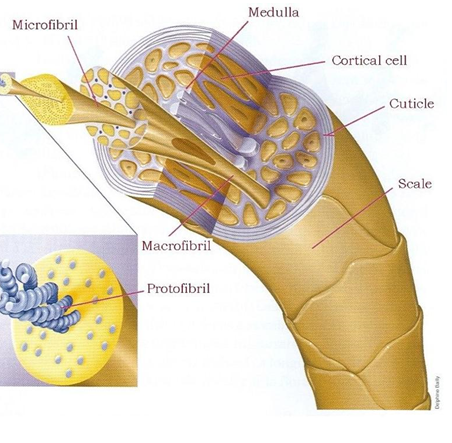By Ken Waldie on the January 2021 Edition
Manzanillo is a challenging place to have hair sometimes. When it gets hot, hair can get frizzy or oily and when it is hu-mid, hair can fall limp and get frizzy or just limp. Hot, humid summers can leave you with oily hair and scalp. It’s a challenge. The causes can be manifold and the answers differ depending on the type of hair you have and what you do to your hair, such as perming, coloring or highlighting. While each issue de-serves an entire article, I think today the frizz issue deserves a shout out, so I’ll try to smooth this one a bit.
 Hair, comes in many varieties: Thick (known as coarse), normal or fine describe the various diameters of hair. Some of us have more hair than others, known as density and the density of hair can affect the way it behaves. Curly, wavy and straight hair types also react in different ways to the environment. Usually, coarse, straight hair will behave in humid and hot environments. Normal and fine hair types can give you grief because heat, sun and humidity are big contributors to grievously mis-behaving hair.
Hair, comes in many varieties: Thick (known as coarse), normal or fine describe the various diameters of hair. Some of us have more hair than others, known as density and the density of hair can affect the way it behaves. Curly, wavy and straight hair types also react in different ways to the environment. Usually, coarse, straight hair will behave in humid and hot environments. Normal and fine hair types can give you grief because heat, sun and humidity are big contributors to grievously mis-behaving hair.
We all shampoo our hair. For many, it’s a daily ritual. But what does shampoo do and how does it affect our hair? I’ll try not to dive into the science too far, but let’s take a look. Shampoo is made of simple ingredients, water, a surfactant to make it sudsy, coloring, and something to make it thick so it pours out of the bottle nicely. Everything else such as botanicals, proteins, and fragrance are added to help keep hair subtle and to keep moisture inside the hair fiber – and… well… to smell nice.
Surfactants, (surface acting agents) are found in dish soaps, laundry soaps and health products but also in many other products, from motor oils to herbicides and firefighting and fire extinguisher contents. Depending on the specific design, surfactants can provide slippery qualities, foamy qualities, such as in toothpastes, or they can act as wetting agents to facilitate water penetration. One important quality of surfactants is that some are designed to dissolve or strip away oils.
The beauty industry uses surfactants for two qualities combined, known as being ambiphilic, meaning they are attractive to more than one substance at the same time. In shampoo, they help wet hair and lift oil away from the scalp and hair strands, and then easily rinse the oil away with water. Unfortunately, this process can strip out the good stuff that keeps moisture in hair. So, manufacturers add ingredients that help to counteract this condition, ideally leaving your hair shiny and controllable.
One category of ingredients in shampoo is humectants. Humectants help hold moisture inside hair strands. So, when you see shampoos listed for dry hair, generally, they do help keep moisture in hair. I made a small, partial list of humectants, some that you may be familiar with. These are commonly used in hair products, specifically to help keep hair from drying out:
Glycerin, Honey, Aloe Vera, Sorbitol, Panthenol vitamin B5, Acetamide MEA, Hydrolyzed wheat protein, Sugarcane, Mango butter, Agave nectar, Flaxseed, Algae extract, Hydrolyzed collagen, Ceramide complex, and Coenzyme q10.
Hair has a lot of things in it, like sulphur, but mostly it’s made of long strands or strings of protein that spiral around each other in bundles like a rope. Strands, called protofibrils, wrap around one another forming a bundle, in turn these small bundles form larger bundles called microfibrils and these bundles spiral around one another forming macrofibrils, or big bundles.
 The result looks like a rope but all of these many bundles are only about 1/10,000 of an inch thick. This rope structure forms what is called the cortex or inside; this spiral aspect allows hair to stretch.
The result looks like a rope but all of these many bundles are only about 1/10,000 of an inch thick. This rope structure forms what is called the cortex or inside; this spiral aspect allows hair to stretch.
The cuticle is a scale-like shell that overlaps and protects the cortex, like roof tiles giving hair an ability to bend. This outer covering is only 10-12 cells thick, but they are very hard and protect hair well. In fact, under extreme heat, the cortex will break down before the cuticle will. Water easily enters into the cortex by slipping past the cuticle’s scales. Over time, the scales come loose or break, allowing more penetration of water or other materials.
Many of the things we do to hair such as blow drying, straightening, back brushing or teasing, break down the integrity of the cuticle, causing it to fray like a pine cone. These actions cause the hair to become caught against each other creating snarls or tangles, not to mention split ends (trichoptilosis).
All hair grows under the skin in the dermis or deeper skin layer. Cells form in the hair root or papilla where they form into those rope-like strands as they start moving up the hair follicle, a tube that extends to the surface of the skin. While most cells are forming fibril strands, some cells develop pigmentation called melanin which gives us our natural hair color. There are actually three types of melanin in the body, two are found in hair, skin and eyes. As newly formed hair strands move up to-ward the skin surface, they dry out and harden.
Contrary to some beliefs, hair cells are dead by the time they arrive at the skin surface. That is to say, hair is not living and grows from the roots not the ends. Normally, a person will have between 65,000 and 150,000 hairs on their head at one time. We lose 90 to 150 hairs every day. That may sound frightening, but it is quite normal to lose that much hair.
When the weather is hot, your hair becomes like clothes in a hot dryer. Leave them drying long enough and even the sturdiest vestments become wrinkled and have to be ironed or steamed (add moisture) to make them presentable. In the same way, your hair in the hot sun becomes dried out and frizzy. It wrinkles.
As I mentioned, hair is actually very absorbent, like a sponge. It will absorb water and other substances very well. With heat, wind and sun, hair will expel moisture and when it does that, we end up looking like over-dried laundry.
The solution is to keep moisture in, which protects and keeps hair subtle and manageable, Humectants coat and penetrate into hair creating a protective barrier holding water inside. Moisturizing shampoos and conditioners are a viable treatment for dry hair and styling products with humectants can also help. I like products that are designed to protect or save color treated hair because they have to be gentle and keep the cuticle tight together in order to keep color from seeping out of the hair.
I also like light oils, such as coconut or avocado oil. Moroccan oil, or Argan oil, is excellent for strong, heavy, coarse hair but if you have fine, blonde hair, stay away- it’s too heavy. Usually when I’m in Mexico, I simply work a bit of coconut oil into my hair, leave it for an hour and then shampoo off with a light shampoo, so I get the greasiness out but leave a layer of protection on my hair.
The light oil treatment is very inexpensive, effective and will help most hair types stay hydrated and manageable. And coconut oil is easy to find locally in Manzanillo.
I teach hairdressing and barbering. At least once a week, my students and our clients ask me what are the best shampoos to use, or the best products for their hair. The very best answer I can give them, I now share with you. The best products are the ones that perform for you, individually. Once you find them, stick with them and don’t vary.
The qualities that a shampoo/conditioner should give are: shiny smooth, brushable and bouncy. And your scalp should feel smooth and not dry.
If you are finding you have dry or itchy scalp, flaking, fly-away hair or an oily, dull, greasy feeling quality to your hair, then maybe you should try another product.
One sign that you may be using a shampoo/conditioner that isn’t the best is resistance to hair color. The resistance is a sign that your hair may be coated with some of the ingredients from your shampoo that are keeping the color from properly penetrating in.
There are good shampoos and cheap ones, expensive ones and very reasonably priced but high performing ones. The trick is to find those shampoos and products that give you the good qualities that I listed above. It’s a trial and error process unfortunately, unless you know a hair stylist, barber or other professional who can help.
Meanwhile, may all your days be good hair days!
Ken teaches hairdressing at Blanche Macdonald Center in Vancouver, BC. And has over 20 years experience as a hairdresser and barber. He also has a wife with frizzy hair, especially when enjoying the humid climate in Manzanillo.



